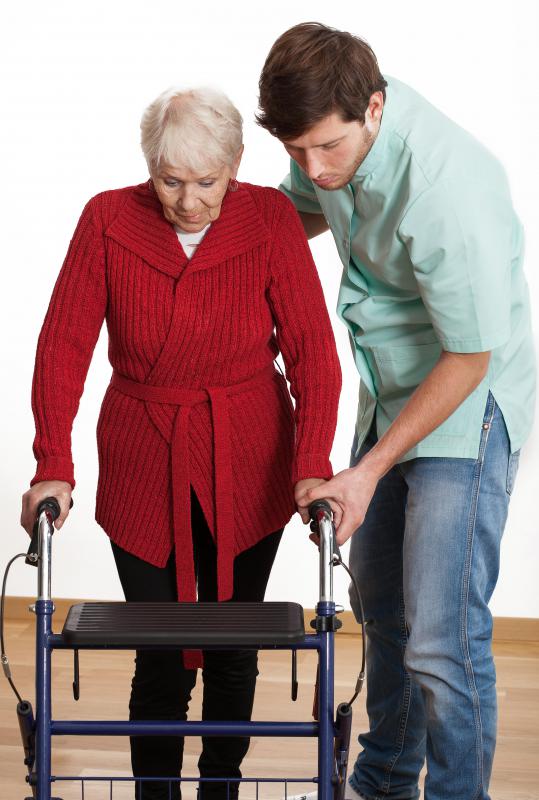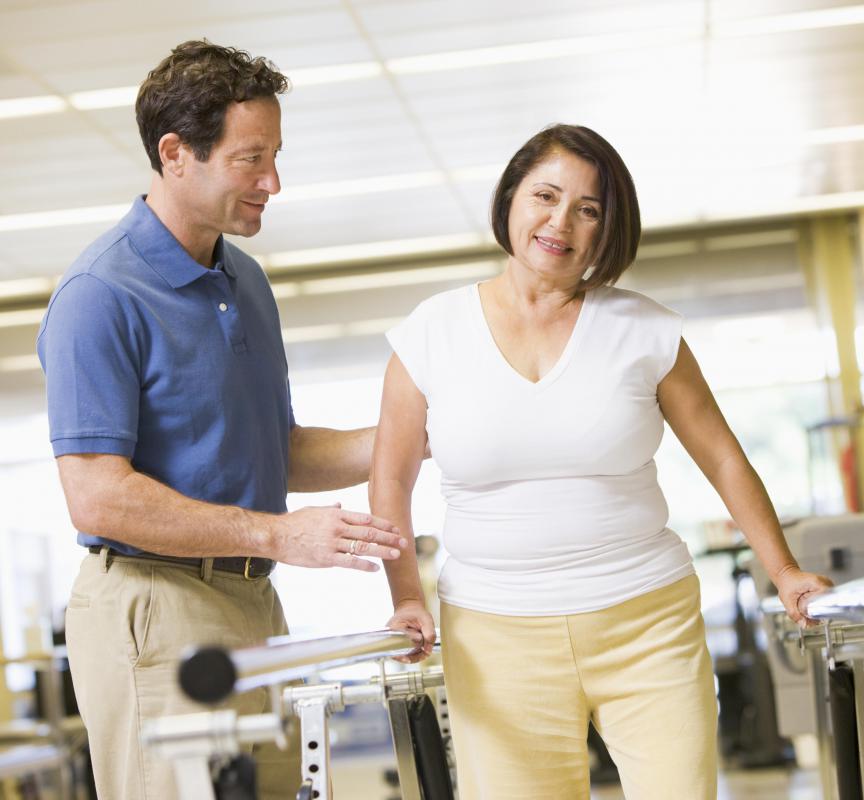At TheHealthBoard, we're committed to delivering accurate, trustworthy information. Our expert-authored content is rigorously fact-checked and sourced from credible authorities. Discover how we uphold the highest standards in providing you with reliable knowledge.
What is Parkinson's Gait?
Parkinson’s gait is a symptom of Parkinson’s disease that usually develops as the condition becomes more severe. Effect of the disease such as a lack of balance and strength contribute to an unsteady, stooped gait. Often, Parkinson’s gait is mistaken for a walking style that’s consistent with old age, until the condition gets worse. Other common signs of Parkinson’s gait include short steps, difficulty in turning or stopping and the patient feeling as if he or she is constantly leaning forward.
Parkinson’s disease affects the human brain and slows the speed of signals traveling through the nervous system. This reduced speed of transmission can have a major effect on everyday activities, including walking, showering and getting dressed. Other problems include a lack of balance and fatigue. As the condition gets worse, the symptoms become more apparent, including Parkinson’s gait.

The main characteristic of Parkinson’s gait is a shortened, shuffling stride, but there are a number of others associated with the problem. When healthy people walk, the arms naturally swing. A person with Parkinson’s usually won’t swing his or her arms as much. If the disease is mainly on one side of the body, then the arm of this side will be most affected.
A person suffering from Parkinson’s may also occasionally freeze and become unable to walk. This can often occur mid stride. Other signs of Parkinson’s gait include a stiff posture and an increased risk of falling.

Drugs are often prescribed to help the symptoms of Parkinson’s, but there are other treatment techniques that can be used to reduce problems with walking. For example, physical therapy can be effective at helping a patient maintain a good posture and increase muscle strength. Practicing the acts of walking, turning and stopping can also make the process easier.

In some cases a walking aid may be required. This can make walking more comfortable and reduce the chance of a fall. During the early stages of Parkinson’s disease, a walking stick may be sufficient, while a walking frame is often used for the later stages of the condition.
It is important for a person with Parkinson’s gait, despite the difficult symptoms, to stay active. As the disease progresses, joints and muscles are likely to become stiff over time if they are not used regularly. Strenuous exercise is often not possible, but short walks can keep the joints in better shape, and help reduce the problems associated with Parkinson’s gait.
AS FEATURED ON:
AS FEATURED ON:
















Discuss this Article
Post your comments